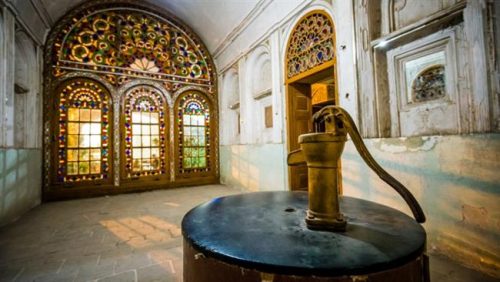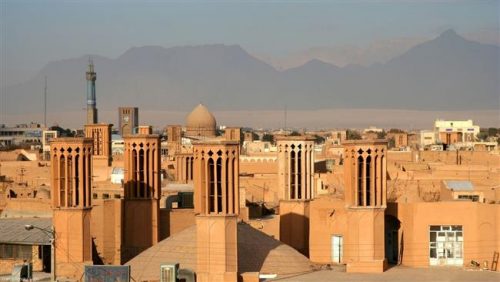About Yazd
Yazd
A branch of the Silk Road skirts the western and southern edges of Iran’s central desert, passing through a string of small cities — Kashan, Nain, Yazd, Kerman — on the way to India.
Of these, Yazd is the largest and the most remarkable, a port of the desert from which tracks led to Mashad and on to Merv, north to Rayy and south to the Persian Gulf.
A provincial city dependent on trade, Yazd also remains one of the few strongholds of the Zoroastrian faith, as well as a center of Islamic art and learning.

History
Historically, Yazd was a halt on what was once the main trade route across southern Iran. It was spared destruction at the hands of the Mongols, and Marco Polo, who stopped there about 1272 AD, lauded Yazd as a “good and noble city”, noted for its fine silks.
Like other towns of the Persian plateau, Yazd is a maze of narrow alleys and built wholly of mud brick and adobe.
Central to both the existence and the success of the city is its irrigation system, the qanāt, draining water from the mountains and into the city through pipes that run for many miles underground.
bazaar
The centre of city life orientates around the bazaar, where mosques, baths, caravanserais and schools were traditionally built right alongside the merchant stalls, making it truly the centre of civic life.
This bazaar was the motor that drove the city’s economy throughout its history, as traders travelling along the edges of the Iranian desert stopped off in the town and thus enriched it with goods and cultures from east and west.
The main items traded in the city were textiles; in the fourteenth and fifteenth centuries, the export of silks and carpets to India and Central Asia underpinned a period of prosperity, and these items are still celebrated. Yazd was also known for decorative metalwork.
Demography
The city is also notable for its community of Zoroastrians, the dominant religion of the Persian Empire before the Arab conquest (in 642 AD).
Zoroastrianism sees the world in terms of a contest between the principles of good and of evil, and thus the duty of mankind is to take part in the moral struggle, and to hasten the triumph of the good by noble deeds, right thoughts and proper worship.
Indeed, Yazd’s impressive Friday Mosque was erected on the site of a large Zoroastrian fire temple, and there still stand the ancient towers outside the city where Zoroastrians traditionally leave the bodies of their dead.
The United Nations Educational, Scientific and Cultural Organization has added the historical texture of the Iranian city of Yazd to its list of world heritage sites.
Photo gallery
-
-
Atashkadeh (fire temple)
- City: Yazd
-
-
-
Dolat Abad Garden
- City: Yazd
- Categories: Historical
-

